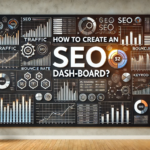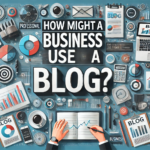
In today’s highly competitive business environment, the fate of a product or service frequently relies on factors beyond its intrinsic quality. Promotional marketing emerges as a dynamic and indispensable strategy that serves as the linchpin for enterprises aiming to distinguish themselves.
Within this blog, we’ll embark on an exploration of the captivating realm of promotional marketing, encompassing topics such as the essence of promotional marketing, its core objectives, the diverse array of promotional marketing types, a comprehensive guide on the step-by-step process of implementing promotional marketing, strategies for achieving success in promotional marketing endeavors, and ultimately, a conclusive summary.
So, let’s get started;
What Constitutes Promotional Marketing? And Core Objectives?

The digital marketing team has laptops and light bulbs. Marketing team metrics, marketing team lead, and responsibilities concept on white background. Pink coral blue vector isolated illustration
Promotional marketing is a comprehensive strategy designed to advertise and market products or services by creating and enhancing brand awareness, attracting potential customers, and encouraging customer loyalty through various promotional activities and campaigns.
It encompasses several key objectives and goals, each serving a specific purpose in achieving marketing and business success.
Here’s a brief explanation of each:
- Elevate Brand Recognition: One of the critical goals of promotional marketing is to increase your brand’s visibility and recognition among your target audience. This goal involves creating a solid brand identity, using advertising, and leveraging promotional materials to establish your presence in the market.
- Drive Sales and Revenue: It is often used to boost sales, especially during specific periods or for particular products. By offering discounts, limited-time offers, and incentives, businesses aim to increase the number of products sold and revenue generated.
- Attract New Customers: Another crucial objective is customer acquisition. Promotional campaigns can attract new customers who have not considered your products or services. Special offers and promotions act as magnets for potential buyers.
- Retain Existing Customers: Keeping existing customers engaged and loyal to your brand is essential. Promotions can be designed to reward loyal customers, encourage repeat purchases, and foster long-term relationships, reducing customer churn.
- Introduce New Products or Services: When launching a new product or service, promotional marketing generates interest and excitement. Teasers, pre-launch offers, and exclusive previews can all be part of a strategy to introduce something new to the market.
- Clear Inventory: Businesses may use promotional marketing to clear excess inventory, especially for seasonal or outdated products. Clearance sales and special deals help prevent overstock and free up capital.
- Encourage Customer Engagement: Engaged customers are more likely to become loyal advocates of your brand. Promotions can encourage customer engagement through social media contests, interactive experiences, and user-generated content.
Types Of Promotional Marketing
- Advertising: Advertising is one of the most well-known forms of promotional marketing. It involves paying for space or time to Utilize different media outlets to connect with a wide-ranging audience. This can include television, radio, print publications, billboards, online banners, and social media ads. The main objective of advertising is to establish brand recognition, convey key messages, and stimulate interest in a product or service. Advertisers often use creative and compelling visuals and Crafting content to grab the attention of their intended audience. Effective advertising campaigns can leave a lasting impression and drive consumer behavior, such as purchasing or visiting a website.
- Direct Marketing: A strategic approach involves sending personalized marketing messages directly to individual consumers. This can be done through various channels, including direct mail, email, telemarketing, and SMS marketing. Direct marketing aims to establish a one-to-one connection with potential customers and is often used to promote specific offers, solicit sales, or gather customer feedback. It relies on data analysis and segmentation to tailor messages to the preferences and needs of each recipient.
- Public Relations: Public relations (PR) is a promotional marketing approach focused on managing a brand’s reputation and building positive relationships with the public, including customers, media, investors, and other stakeholders. PR activities include press releases, media outreach, crisis management, event planning, and community engagement. PR aims to generate favorable publicity and maintain a positive public image for the brand. PR professionals work to create a narrative that aligns with the brand’s values and objectives, and they often serve as intermediaries between the brand and the media or the public.
- Sales Promotion: Sales promotion refers to short-term tactics and incentives designed to boost sales and encourage immediate action from consumers. This includes techniques like discounts, coupons, buy-one-get-one-free (BOGO) offers, contests, and loyalty programs. Sales promotions often create a sense of urgency and entice consumers to purchase or take a specific action. They effectively clear out excess inventory, launch new products, or reward loyal customers.
- Content Marketing: Involving the creation and dissemination of valuable, informative, or entertaining content to attract and engage a target audience. This content includes blog posts, videos, infographics, podcasts, and more. Content marketing establishes the brand as an authoritative figure in the industry to cultivate consumer trust and drive profitable customer actions. Content marketing centers on delivering value to the audience rather than directly promoting products or services.
- Guerrilla Marketing: A creative and unconventional strategy that uses surprise and low-cost tactics to grab attention and create buzz. It often involves unexpected or weird placements, such as street art, flash mobs, or viral stunts. Guerrilla marketing campaigns are designed to go viral and generate organic interest and discussions among the target audience. This type of marketing is known for its ability to create memorable experiences and generate media coverage without a large advertising budget.
- Influencer Marketing: Influencer marketing leverages individuals or entities Possessing a solid online presence and a committed follower base (influencers) to promote products or services. Followers trust influencers, and their recommendations can carry significant weight. Brands collaborate with influencers to reach a specific target audience authentically. Influencer marketing can manifest in different ways, such as sponsored content, product reviews, and influencer takeovers of brand social media accounts.
Having explored the concept of promotional marketing, its objectives, and the various types available, let’s now delve into the practical aspects of implementing promotional marketing strategies.
How To Do Promotional Marketing? (Step-By-Step)

Here’s a step-by-step guide on how to implement promotional marketing effectively:
Setting Clear Goals And Objectives
- Start by clearly stating your marketing goals and objectives. What do you want to achieve with your promotional campaign? Typical objectives include increasing sales, expanding brand awareness, generating leads, or boosting website traffic.
- Ensure your objectives adhere to the SMART criteria—specific, measurable, achievable, relevant, and time-bound. For instance, set a goal to enhance website traffic by 20% within the next three months.
- Harmonize your goals with broader business objectives to ensure your promotional efforts contribute to your company’s success.
Understanding Your Target Audience
- Perform comprehensive market research to acquire insights about your target audience. Understand their demographics, interests, pain points, and buying behaviors.
- Develop comprehensive buyer personas that mirror your ideal customer profiles. That helps tailor your promotional messages and offers to resonate with specific customer segments.
- Consider conducting surveys, analyzing customer data, and monitoring social media discussions to gain valuable insights into your audience’s preferences.
Choosing The Right Promotional Channels
- Choose the marketing channels that prove most efficient in reaching your target audience. Different channels work better for different demographics and industries.
- Common promotional channels include social media platforms (e.g., Facebook, Instagram, Twitter), email marketing, content marketing (e.g., blogs, videos), paid advertising (e.g., Google Ads, Facebook Ads), and offline methods like direct mail or events.
- Consider each channel’s unique characteristics and how they align with your audience’s behavior and preferences.
Creating Compelling Promotional Offers
- Develop attractive and relevant promotional offers that resonate with your target audience. These offers can include discounts, exclusive deals, free trials, or bundled packages.
- Craft compelling messaging highlighting your offer’s value and addressing your audience’s needs and pain points.
- Use persuasive visuals and copywriting to make your promotional materials stand out and grab your audience’s attention.
Measuring The Effectiveness Of Your Promotional Campaign
- Deploy tracking and analytics tools to observe the performance of your promotional campaign. That includes tracking website traffic, conversion rates, social media engagement, and sales.
- Regularly review key performance indicators (KPIs) to assess the success of your campaign concerning your goals and objectives.
- Use A/B testing to experiment with different campaign elements, such as headlines, images, and calls to action, to OPTIMIZE PERFORMANCE.
- Adapt your approach according to the data and insights you collect. If specific channels or offers are performing exceptionally well, allocate more resources to those areas. Conversely, if some elements are underperforming, make necessary adjustments or reallocate resources accordingly.
Now that we’ve covered the step-by-step guide for conducting promotional marketing let’s examine the strategies that lead to successful campaigns.
Strategies For Successful Promotional Marketing

Indeed, let’s explore each of the strategies for successful promotional marketing in detail:
Content Marketing
Content marketing encompasses crafting and disseminating valuable content. Create useful, relevant, and consistent content to attract and engage a particular target audience. This content can take diverse forms, including blog posts, videos, infographics, podcasts, and e-books.
The central aim of content marketing is to position the brand as an authoritative voice within its industry, cultivate trust among consumers, and ultimately drive actions that benefit the business financially. Unlike direct promotion of products or services, content marketing centers on delivering meaningful value to the audience. It is an effective strategy for building enduring customer relationships, nurturing leads, and enhancing brand visibility.
Additionally, content marketing plays a pivotal role in SEO (Search Engine Optimization) by continually supplying fresh and valuable content that search engines reward with improved rankings.
Social Media Marketing
Social media marketing utilizes platforms like Facebook, Instagram, Twitter, and LinkedIn to establish connections and engage a specific target audience. Brands develop and distribute content, engage followers, and implement advertising campaigns.
Successful social media marketing hinges on comprehending the distinct attributes of each platform and customizing content to suit. Authenticity, active engagement, and delivering valuable content that resonates with the audience are pivotal.
This strategy aids in elevating brand recognition, directing website traffic, generating leads, and facilitating customer feedback and support. Additionally, paid social advertising offers precise targeting based on specific demographics and interests.
Email Marketing
Email marketing involves direct communication that entails sending tailored emails to subscribers or potential customers, encompassing newsletters, promotions, product updates, and personalized recommendations.
Successful email marketing entails segmenting email lists based on user behavior, crafting compelling subject lines and content, and ensuring mobile compatibility. This strategy excels at cultivating and sustaining customer relationships, boosting sales, and fostering repeat business. It’s known for its impressive return on investment (ROI) and the ability to automate personalized messages at scale.
Influencer Marketing
Influencer marketing harnesses the influence of individuals or entities with a solid online presence and loyal followings (known as influencers) to endorse products or services. These influencers are trusted by their followers, making their endorsements highly impactful. To reach a particular target audience, brands collaborate with influencers authentically.
Influencer marketing encompasses sponsored content, product reviews, and influencer-driven takeovers of brand social media accounts. They are achieving success in influencer marketing, which hinges on carefully selecting influencers whose values align with the brand’s and who have engaged and relevant audiences.
Referral Marketing
Referral marketing incentivizes happy customers to recommend a brand to friends, family, or colleagues in exchange for rewards. It leverages the effectiveness of word-of-mouth recommendations, allowing brands to establish referral programs where both the referrer and the new customer gain benefits like discounts or free products.
This strategy capitalizes on the trust existing customers have in their networks and has the potential to generate high-quality leads and foster greater customer loyalty.
Pay-Per-Click (PPC) Ads
PPC advertising entails paying for clicks on online ads visible on platforms like search engines (e.g., Google Ads) and social media (e.g., Facebook Ads). It offers precise targeting options based on keywords, demographics, and user actions, providing a swift means to boost website traffic when effectively handled.
To excel in PPC advertising, thorough keyword research, compelling ad content, well-optimized landing pages, and continual monitoring with adjustments are vital.
Conclusion
With a comprehensive understanding of promotional marketing, there’s no need to delay—take advantage of this powerful tool for your business today and witness its positive impact on your enterprise.
If you still have any questions related to the topic, please leave them in the comment section. We will be happy to answer any questions.
Thanks for reading 🙂
Also Read: A Complete Guide To Localized Marketing, And
A Beginners Guide To Podcast Marketing








No Comments